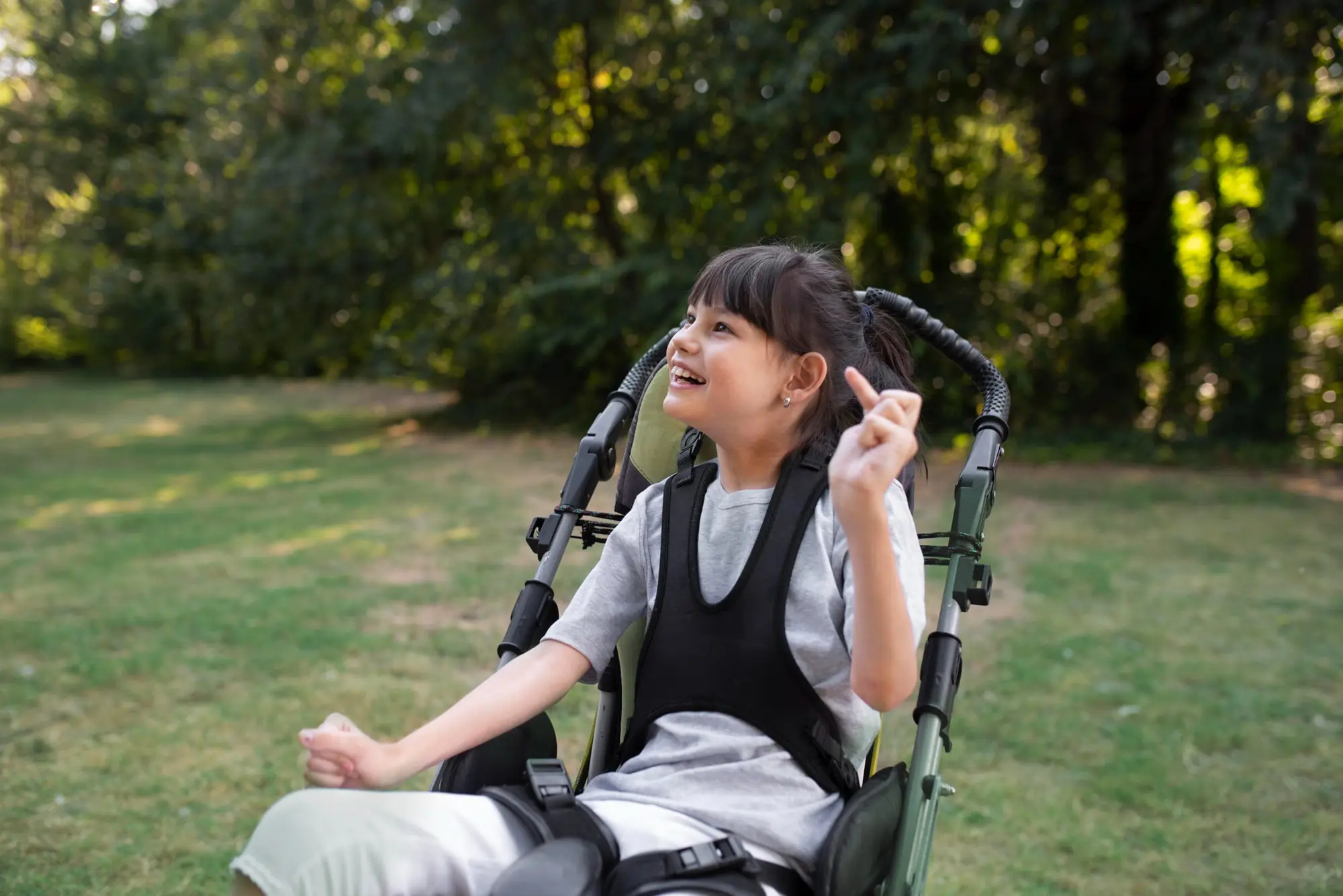
What is Cerebral Palsy? What are the Symptoms of Cerebral Palsy?
Cerebral palsy (CP) is a neurological disorder that occurs as a result of damage during brain development and affects muscle movements and body posture. This condition usually develops before, during, or immediately after birth and manifests itself with different symptoms depending on brain damage. Cerebral palsy can cause problems with muscle control, balance, and coordination, as well as speech and learning difficulties. Symptoms begin to be noticed in infancy and become more pronounced over time.
What is Cerebral Palsy?
Cerebral Palsy (CP) is a neurological disorder that occurs as a result of damage to brain development and affects muscle movements and body posture. It is usually the result of brain damage that occurs before, during, or shortly after birth. Cerebral Palsy affects areas of the brain that regulate muscle control, coordination, and posture, which can lead to movement difficulties, muscle stiffness, balance problems, and sometimes other difficulties such as speech, learning, or sensory problems.
What are the Symptoms of Cerebral Palsy?
Symptoms of cerebral palsy (CP) can vary depending on the severity of the damage, brain region, and type. Usually, symptoms begin to be noticed in infancy and become more pronounced over time. Here are the most common symptoms:
- Muscle Tone Abnormalities: There may be excessive stiffness (spasticity) or weakness (hypotonia) in the muscles.
- Movement Coordination and Control Issues: Irregularity in muscle movements, muscle contractions, involuntary movements or tremors may occur.
- Delay in Motor Skills: Delays in motor developmental stages such as rolling, sitting or walking can be observed in babies.
- Balance and Gait Problems: Difficulty in walking, imbalance or slow gait may occur. Some children may exhibit unsteady gait (ataxic gait).
- Reflex Abnormalities: Reflexes may last longer than normal in infants, or reflexes that are not expected to occur in adults may continue.
- Muscle Stiffness and Spasms: Especially in spastic cerebral palsy, stiffness in the muscles, painful spasms or abnormal postures are common.
- Swallowing and Speech Difficulties: In some people, it may be difficult to control speech, swallowing, or tongue movements.
- Mental Developmental Delay: Some children, but not all, may have intellectual disabilities or learning difficulties.
- Vision and Hearing Problems: Some patients may also have vision loss, strabismus, or hearing problems.
- Seizures (Epilepsy): Some individuals with CP may develop epileptic seizures.
Symptoms of Cerebral Palsy can vary greatly from person to person, and these symptoms may change with age. Early diagnosis and intervention can significantly improve a child’s quality of life.
What are the Symptoms of Cerebral Palsy in a Newborn Baby?
Symptoms of cerebral palsy in newborns can usually be noticed shortly after birth, but in some cases symptoms may appear in later months.
- Developmental Delays: The baby may have a delay in holding his head upright, rolling, sitting, crawling or walking compared to his peers.
- Abnormal Muscle Tone: In the baby, the muscles may be too stiff (spastic) or too weak (hypotonic). The baby may sometimes stiffen or, conversely, his body may be too loose.
- Reflex Abnormalities: In newborns, reflexes may be overpowered, or reflexes that should disappear with age may persist. For example, prolonged persistence of newborn reflexes.
- Movement Disorders: The baby may show involuntary muscle movements or have irregularities in motor skills. For example, unilateral movements or irregular muscle movements.
- Feeding and Swallowing Difficulties: There may be difficulty in sucking and swallowing reflexes. This can cause babies to not be fed enough.
- Imbalance in Body Posture: When the baby changes posture or position, he may move unsteadily or be in a rigid position with his legs bent or unbent.
- Poor Coordination: The baby may have difficulty in skills such as reaching and holding objects with his hands.
In newborns, these symptoms may not always be clear, so the baby’s motor development is closely monitored during doctor’s check-ups. In case of doubt, it is important to consult a doctor for early diagnosis and intervention.

What Causes Cerebral Palsy?
It is necessary to distinguish the causes of cerebral palsy as prenatal, birth and postpartum.
- Infections
- Hemorrhages
- Placental insufficiency
- Medication use
- Trauma
- Radiation
- Premature (36. Birth prematurely than a week)
- Low birth weight (less than 2500 g)
- History of difficult/intrusive birth
- Presentation anomalies
- Multiple pregnancies
- Neonatal hyperbilirubinemia (neonatal jaundice)
- Neonatal infections, sepsis, meningitis
- Convulsions (seizures)
- Head trauma
- Central nervous system infections
Types of Cerebral Palsy
What is Spastic Cerebral Palsy?
It causes stiffness and limitation of movement in the muscles. It is the most common type.
It is divided into 3 as diplegic, hemiplegic and quadriparesis.
- Diplegic: They are children with mild involvement in the upper extremities and significant involvement in the lower extremities.
- Hemiplegic: They are children in which one half of the trunk is retained
- Quadriparesic: They are children with involvement of all four extremities and trunks
What is Dyskinetic (Athetoid) Cerebral Palsy?
Dysnetic (Athetoid) is one of the types of Cerebral Palsy. Dyskinetic Cerebral Palsy leads to uncontrollable, involuntary movements.
What is Ataxic Cerebral Palsy?
It is characterized by problems with coordination and balance. It is seen in cerebellum (cerebellum) lesions.
Mixed Type Cerebral Palsy
It occurs in people who show symptoms of more than one species.
How Is Cerebral Palsy Diagnosed?
The diagnosis of cerebral palsy (CP) is usually made after a series of clinical evaluations and tests. The process of making a diagnosis usually includes the following steps:
- Developmental Observation: The doctor assesses whether the child’s motor skills are appropriate for his age. It is checked whether there is a delay or abnormality in the child’s movement skills such as sitting, crawling and walking.
- Physical Examination: Abnormalities in muscle tone, muscle strength, coordination, balance and movements are evaluated. CP is usually manifested by spastic movements, muscle stiffness, or uncontrolled movements.
- Medical History: Risk factors such as prenatal, intranatal and postnatal complications, premature birth, low birth weight are examined.
- Neurological Tests: Brain imaging tests may be performed. These are often used to detect brain damage or abnormalities that cause CP. Common tests include:
Magnetic Resonance Imaging (MRI): It is used to examine structural problems in the brain.
Computed Tomography (CT): It is another imaging method used to examine brain tissue.
Electroencephalogram (EEG): If the child has seizures, abnormal activities can be detected by measuring brain waves with EEG.
- Laboratory Tests: Blood tests may be done to rule out genetic or metabolic disorders.
- Developmental and Cognitive Assessment: The child’s mental development, language skills, and social interactions are examined. Some children with cerebral palsy may have cognitive or language developmental delays.
The diagnosis is usually made in early childhood, when a delay or abnormality in the child’s motor skills is noticed. However, it can take time to make a definitive diagnosis, because as babies grow, their motor skills may improve. That’s why repetitive assessments are important.
Is cerebral palsy genetic?
Cerebral palsy is not a genetic disorder. It usually develops before, during, or after birth due to brain damage. Cerebral palsy is not a genetic condition and is not passed from parents to children.
How Is Cerebral Palsy Treated?
Cerebral palsy (CP) is a condition that occurs as a result of damage to the central nervous system and affects muscle control. Although there is no cure, various treatment methods can help relieve symptoms, improve function, and improve quality of life. The treatment plan may vary depending on the person’s age, the severity of CP, and the specific symptoms. Here are
- Physical Therapy: Exercises to increase muscle strengthening, flexibility, balance and mobility are among the cornerstones of CP treatment. It helps improve walking, sitting and other motor skills.
- Occupational Therapy: It aims to provide the person with appropriate skills to facilitate activities of daily living (such as dressing, eating, writing). It focuses especially on fine motor skills.
- Speech Therapy: It aims to improve communication skills in individuals with speech and language disorders. It can also help deal with eating and drinking problems in those who have difficulty swallowing.
- Drug Treatment: Muscle relaxants (eg, baclofen, diazepam) can be used to reduce muscle spasms and relieve pain. Botox injections can also be used to reduce spasticity in certain muscle groups.
- Surgical Intervention: Orthopedic surgery can be performed to correct muscle imbalances, prevent or treat contractures (muscle shortening) and deformities. It is also possible to control muscle spasms with nerve surgery (selective dorsal rhizotomy).
- Orthotics and Supporting Devices: Orthoses (leg supports), walking devices, and wheelchairs can be used to improve walking, balance, and posture.
- Stem Cell Therapy: Although still in the experimental stage, stem cell therapy is being investigated as a hope in relieving the symptoms of cerebral palsy.
- Alternative Therapies: Alternative therapies such as yoga, hydrotherapy (water therapy), equine therapy (hippotherapy), and acupuncture may be beneficial for some individuals.
The treatment plan is shaped according to the specific needs of the individual by doctors, therapists and other health professionals with a multidisciplinary approach.
Cerebral Palsy Frequently Asked Questions
How Is Cerebral Palsy Recognized?
Cerebral palsy can be recognized by symptoms such as delays in motor skills, muscle stiffness, abnormalities in muscle tone, and imbalance in movements.
When Does Cerebral Palsy Become Apparent?
Generally, motor developmental delays begin to be noticed in infancy, especially in the first 1-2 years.
How Do Cerebral Palsy Seizures Happen?
Seizures of cerebral palsy can be in the form of epileptic seizures, but this is not the case for every patient. Seizures may occur in some patients due to brain damage.
Can CP patients walk?
The ability of children with cerebral palsy (CP) to walk varies depending on the type of brain injury, its severity, and the areas it affects. Some children with CP may be able to walk independently, while others may need assistance or have to use a wheelchair.




